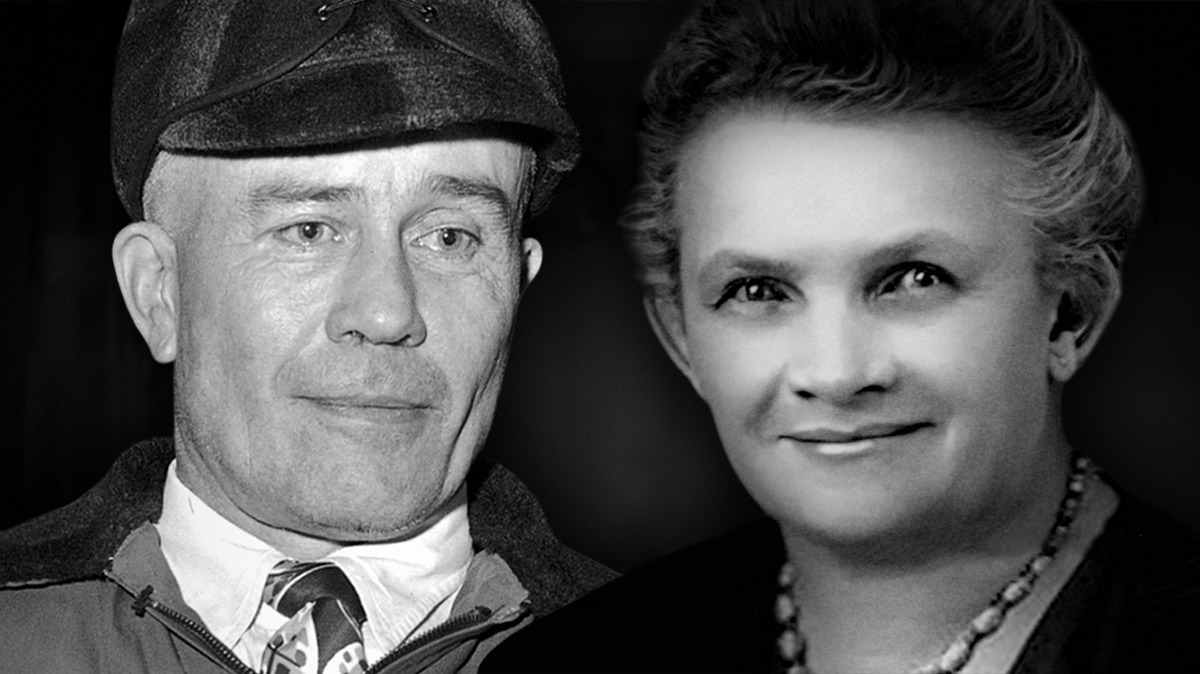'The Lost Tapes Of Ed Gein' Recap: Did Ed Kill His Own Brother, Henry?
1 天前
What really pushes a man to the brink of madness? This is the question we ask every time we come across the crimes of a serial killer. Is it their childhood trauma that pushes them too far? Or are some people born the way they are? Sometimes it is their abusive parents that become the reason for their madness, while other times it is their narcissism that turns them into gruesome monsters. Till date, no one really has all the answers. This is because the human mind is the most complex mystery we know of. And when it comes to psychopaths or sociopaths, psychologists and experts are as confused as we are. This article discusses America’s prolific serial killer, Ed Gein, the details of whose crimes shocked the entire country in the late 1950s. But before moving forward, I just want to point out that all the facts and figures mentioned in this article are taken from the recently found conversation tape of Ed Gein from the night of his arrest on 16th November 1957, presented in MGM’s 2019 documentary, Psycho: The Lost Tapes of Ed Gein. In the series, a number of experts and researchers react to the information, or perspective, that the tape provides. So, without further ado, let’s jump straight into the life of the Butcher of Plainfield.
How Were Ed Gein’s Crimes First Discovered?The Lost Tapes of Ed Gein focuses on the newly discovered conversation tape, first found in 2019, that had been made by the local authorities in Plainfield, Wisconsin, on the night of the criminal’s arrest on 16th November, 1957. In the tape, Ed can be heard answering the questions of the local judge, Boyd Clark, and the district attorney, Earl Kileen. The interrogation was interestingly held at a time when most of Ed’s crimes had not yet been discovered, which makes the recording even more unique. While the man had been detained at the local police station and was being questioned about the horrific discoveries made at his house, an entire police team was still at his residence, searching the place for more clues. Therefore, it is best to begin with the incidents from that very day, when the unbelievably brutal crimes of Ed Gein suddenly tumbled out of the closet in front of the whole country.
It all began when Frank Worden, a resident of the small rural town of Plainfield, returned to the family hardware store that he ran with his mother, Bernice, and found it to be suspiciously empty. Like most of the men in town, Frank had gone to the nearby fields to shoot deer, as the deer hunt season had just begun, but he could not find his mother after returning home. Upon checking their store, Frank instantly noticed a trail of blood from the sales counter to the rear exit of the building, along with a few empty bullet casings. He instantly contacted the police, and he also had a suspect in mind. Just the previous day, one of his neighbors, Edward ‘Ed’ Gein, had come to the store inquiring about antifreeze, when he had also cheekily asked Bernice out on a date, which neither the 58-year-old woman nor her son had liked.
Now, when Frank checked the reception, he clearly saw receipts made out for antifreeze and suspected that Ed must be somehow involved with the trail of blood and his mother’s disappearance. As soon as the police were informed about the situation, they went over to Ed Gein’s property to question the man but found it empty, as he was not home. The police officers still decided to check the shed, possibly in search of any clues that might lead them to the missing woman, but what they found was absolutely horrific. Bernice Worden’s naked body had been strung up inside the shed, just like the carcass of a hunted animal is usually gutted and dressed out to dry. Her head had been severed from the body, and her internal organs had been cleaned out as well. The police immediately tracked down Ed, who was at a neighbor’s home at the time, and arrested him, following which his entire house was searched. This was when Ed Gein’s crimes were first discovered, and the country simply could not believe the horrors that had taken place on the property.
How did Ed’s childhood play an important role in his adult life?With the proliferation of psychoanalysis, the idea that a person’s experiences in childhood play a significant role in their adult lives was already becoming common in the 1950s. Therefore, investigations at the time delved a lot into Ed Gein’s childhood to decode his personality, and quite rightly so. On the surface, Ed was soft-spoken and mild-mannered, which is why his neighbors initially felt that he was being framed for crimes that he had not committed. But looking back at his past made some of his crimes quite believable. Born on the 27th of August, 1906. Ed had grown up in a stifling environment at home, in La Crosse, Wisconsin. His father, George Gein, was an alcoholic who is assumed to have mistreated the boy from a young age, which probably instilled an innate violence in him, which he would later channel to commit the murders.
But more significantly, Ed’s mother, Augusta, had an even more stifling effect on the young boy because of her extremely religious nature. Augusta entirely devoted her life to religion, which is not in itself a bad thing, but she absolutely despised the immorality that the modern world was bringing in and held very strong opinions. She believed that all women had an innate tendency to be morally corrupt and that most of them are sinners who just want to ruin the lives of men, at least in a spiritual sense. Augusta passed down all these obnoxious values to her son, and Ed’s world was naturally shaped around these perspectives, which meant that he had almost no friends as a child and no interactions with the opposite sex as a teenager or even as a young adult.
The situation was such that the only female Ed had any interaction with was his own mother, who continued to keep him in a closeted world, protecting him from all the evils of the outside world. Even when Ed was in his late 30s and early 40s, his daily routine involved Augusta reading verses from the Bible to him and his brother after having spent the entire day with her at the house. Most experts believe that Ed could never grow up socially and develop an adult personality because of his mother’s strong influence on him, which made him all the more detached from the world. After his father passed away in 1940, Ed started doing odd jobs in town to make small amounts of money and keep the family afloat, but he never really worked a serious profession in his lifetime. This extremely unusual childhood, and then finally the death of Augusta in 1945, would go on to turn Ed into a psychopathic serial killer.
Did Ed Kill His Own Brother?Ed Gein’s relationship with his elder brother, Henry, was seemingly affected by the toxic home environment as well. Based on the reports collected during the investigation in 1957, it was determined that Henry was the more emotionally stable of the two, and he had been somewhat able to avoid his mother’s overwhelming influence. As a result, Henry seemingly tried to convince Ed to see their mother as the problematic figure that she really was when the boys were teenagers and had tried to introduce him more to the outside world, which was starkly different from what Augusta claimed it to be. However, he ultimately failed to do so, and the brothers did not have the best of relations as adults. Moreover, Henry had met and fallen in love with a woman and had moved in with her as well, which was not taken well by Augusta and therefore, by Ed.
In May of 1944, a fire broke out at Henry Gein’s farm and his house, and Ed rushed to the town seeking help from the neighbors and the authorities. By the time he managed to rally a group to come to the farm and put the flames out, Henry had gone missing. He was found lying dead in the farm a few hours later, and the authorities determined the death to have been caused by asphyxiation. As an expert clarifies in the docuseries, it is not uncommon to have individuals die from asphyxiation while desperately trying to put out a fire at their property. However, it was later reported that there were some serious injuries on Henry’s face as well, which probably suggested that he could have been struck to death as well.
Although this possibility was never taken seriously by the police, many experts now believe that Ed had definitely killed his own brother, out of rage and jealousy. The feeling of rage stemmed from the fact that Henry would often speak ill about their mother, Augusta, in an effort to influence Ed to not be so worshipping towards her. But Augusta remained a divine figure to Ed throughout his life, even after her death in 1945, and so he gradually started to hate his own brother for disrespecting her. The feeling of jealousy, as experts opine, stemmed from a deep desire in Ed to be the sole caretaker of Augusta and to be the only person close to her, meaning that he started seeing Henry as a competitor for his mother’s love and attention. Therefore, he seemingly had only one option to secure his position in his mother’s life—killing his elder brother. In fact, Ed did care for Augusta in the last few years of her life all by himself, often lying beside her bedridden body and consoling her like a child, playing the role of a single parent to his own mother.
What was the most horrid crime that the man had committed?Between 1945 and 1957, Ed Gein had killed three women for seemingly unknown reasons. It is to be noted that he is confirmed to have killed three women only because he had confessed to doing so, meaning that there were possibly many more victims, but they are not officially counted in the records because of lack of proof. However, what made the man appear to be worse than the Devil himself was the bizarre items found in his house by the police during their initial investigation. Apart from the ‘dressed out’ body of Bernice Worden, the police also found numerous human remains, ranging from severed limbs and peeled-off human skin to even the decomposing head of one of his victims.
For about four to five years, Ed had been regularly digging up fresh graves at the local cemetery, stealing the bodies from the coffins, and bringing them back to his house, where he cut them up and used the decomposing skin, flesh, and other parts for bizarre purposes. He used human skulls to eat and drink from, even placing skulls on the four posts of his bed. Severed vulvas were found neatly stored inside boxes, sometimes even painted and decorated, while a belt made with female nipples was also found. Certain organs, like human hearts, were found on cooking pans, which suggested that Ed was consuming human flesh as well, which he outright denied.
Most horrific of them all was his habit of peeling the skin off the bodies that he stole (and also killed) and sewing them together to create an extended human skin, which he seemingly planned to wear. There were numerous face masks found in the house, which had indeed been made from skin peeled off his victims’ faces, and Ed confessed to wearing them on a regular basis. Several pieces of furniture, like chairs, were found to have been made with human skin, and the man kept using these items in his regular life. He had also reportedly made leggings and a corset out of human skin, and because of all the bizarre items found at his house, Ed Gein came to be called the Plainfield Ghoul.
Why did Ed Gein commit the shocking crimes?The exact reason why the man had committed these shocking crimes remains up for debate, with him mostly saying that he did them in a trance-like state and did not exactly remember the events. He is heard making such a claim in the conversation tape presented in The Lost Tapes of Ed Gein as well. However, many experts still believe that this was just a ruse by him to try and avoid facing the consequences of his crimes, for he had to have been aware of what he had done. Ed could have really forgotten about his crimes because of the onset of dementia (he did suffer from dementia in his later years), or he could have forgotten because his mind had intentionally suppressed these memories out of a sense of guilt, at least initially.
A deeper look into the criminal’s actions makes it evident that his unhealthy relationship with his mother had a significant role to play in the matter. Ed had loved his mother a bit too much, and some believe that he might have even had his only sexual experiences with her. Therefore, when she passed away and had to be buried, Ed regularly kept praying at her grave, hoping that she would somehow come back to life. According to most experts, and even the official investigation, he had decided to dig up dead bodies at the cemetery, peel off the skin, and try to make masks and garments out of it because of a deep desire to reunite with his mother.
The dead bodies, possibly the very physical things about them, like the stench and their shriveled appearance, reminded him of his mother, and so he made them a part of his regular life, since he did not want to disrespect Augusta’s body by digging it up. There is also a theory that Ed had started making furniture, garments, and crockery out of human remains because of his extreme loneliness, as the presence of these items made him feel surrounded by people, in a twisted sense. The extreme nature of the crimes and the over-presence of dismembered nipples and vulvas also suggested that there must have been a sexual (necrophiliac) angle to the matter as well, but it couldn’t be proved.
There has been enough discussion as to why Gein had the peculiar urge to sew multiple pieces of human skin together to make a ‘human leather overalls’ which he intended to wear. The closest theory suggested by experts is that he had a secret desire towards transvestism, where he wanted to place himself in a woman’s skin, but in this case very literally. The fact that he had used only women’s skin to sew this garment (if we may call it so) further confirms this theory. Both his desire to feel closer to his dead mother, and the urge to step into a woman’s skin, seem to have pushed him to commit the crimes. Ed Gein himself never provided any proper explanation as to why he had committed the murders, dug up the graves, and defiled the dead bodies, but there can be hardly any doubt that he had been completely aware of his actions and was not in any trance-like state, as he kept claiming.
What ultimately happened to Ed Gein?After he was picked up by the police on the 16th of November, 1957, Ed Gein spent the rest of his life in custody, with him first facing trial just a few days later, on the 21st of November. However, Ed claimed to be not guilty by reason of insanity, and the court ruled that he was indeed unfit to defend himself in a trial because of his mental illnesses. It was strongly believed that Ed had inherited a slew of mental illnesses from his mother, and clinical tests proved him to be unfit. Thus, he was kept in custody at the Mendota State Hospital in Madison. 11 years later, in 1968, the court decided to open the case once again, and this time determined that Ed was in a much more stable condition mentally and was therefore fit to stand trial.
A special rule in practice in the state of Wisconsin at the time was ‘split trials,’ in which the accused would be subjected to two or more trials for separate issues one after another, instead of dealing with the entire matter in a single trial. In the first trial, Ed Gein was found guilty of the first-degree murder of Bernice Worden for which he received a life imprisonment. However, the second trial’s intention was to decide whether Ed was mentally fit to serve his prison sentence, and a number of psychiatrists testified in court, leading to the judge deciding that Ed was too sick to be treated like a usual convict. Therefore, he was acquitted in the second trial by reason of insanity, and once again transferred to the Mendota State Hospital.
Since being put up at the mental health facility, Ed never caused any trouble for anyone, and neither did he attract any attention by talking about his crimes or recounting his horrific actions. The nurses at the facility rather remember him as a normal patient, one whose condition even sometimes made them feel sympathetic towards him. Ed Gein ultimately died on 26th July, 1984, from lung cancer, at the age of 77. He was buried beside his parents and elder brother in the cemetery in Plainfield, the same place where he had desecrated numerous graves for his evil purposes.
How did Ed Gein’s legacy contribute to the horror genre in Hollywood?Being the first serial killer to be covered extensively by the national media in the United States (although the term ‘serial killer’ was not in use yet at the time), Ed Gein immediately had an impact on popular culture, for his crimes were genuinely stranger than fiction. As mentioned in The Lost Tapes of Ed Gein, the case inspired Robert Bloch to write his novel, “Psycho,” which was immediately noticed by the master of suspense, Alfred Hitchcock. The English director’s cult classic, Psycho, released in 1960, immediately thrilled American audiences, who had already been rocked by Ed Gein’s case just a few years earlier. There was no doubt that Norman Bates was based on Ed Gein himself, and so the film captured the imagination of millions. Incidentally, the film would go on to change the trajectory of horror films in Hollywood forever, being the first prominent psychological horror film.
Ed Gein’s case suddenly made people realize that horror fiction does not necessarily have to be about paranormal beings or monsters and could be just as chilling if the subject was just a man capable of unthinkable crimes. It went on to inspire numerous other films as well, ranging from The Texas Chain Saw Massacre to The Silence of the Lambs. However, not everyone appreciated being a part of Ed Gein’s legacy, though, as the residents of Plainfield still continue to be skeptical about outsiders coming to see the town or shoot at the spots of the brutal crimes.
In March of 1958, Ed’s house, where he had carried out the most shocking crimes, was supposed to be auctioned off, and a museum was supposed to be built at the place. However, the house mysteriously burned to ashes in a fire, and the authorities did not care much about it and called it an accident. It was very evident that the townsfolk did not want the negative light of having a museum dedicated to a serial killer in their quaint hometown, and so had possibly burnt the house down. The land owned by Ed Gein continues to exist in Plainfield, but nothing has ever been built at the site. The remains of the numerous victims (of murder and grave desecration) have been buried together in a collective grave at the cemetery in Plainfield.
...Read the fullstory
It's better on the More. News app
✅ It’s fast
✅ It’s easy to use
✅ It’s free









